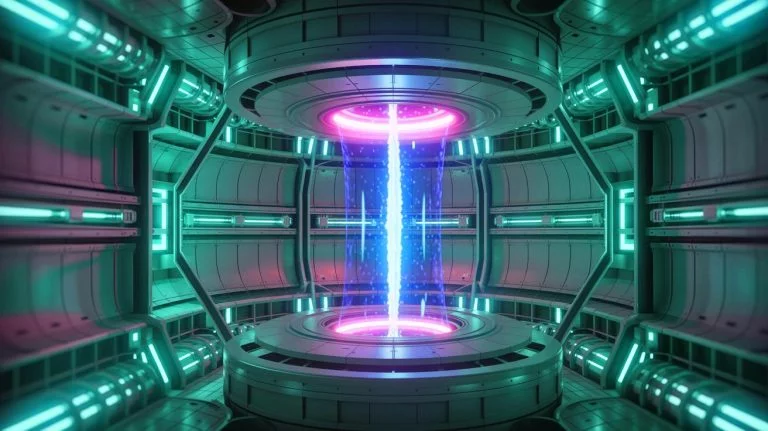| IN A NUTSHELL |
|
The pursuit of harnessing the power of the sun on Earth through nuclear fusion is rapidly advancing. China’s breakthrough with its Experimental Advanced Superconducting Tokamak (EAST), often dubbed the “artificial sun,” marks a significant milestone in this journey. By successfully maintaining a superheated plasma for a world-record 1,066 seconds, Chinese scientists have not only pushed the boundaries of fusion technology but have also ignited hope for a cleaner energy future. This achievement is a testament to the collaborative efforts and relentless innovation in the field of fusion energy research.
Advancing the Frontier of Fusion Power
The allure of fusion energy lies in its potential to provide a nearly limitless source of clean power. Unlike conventional nuclear reactors that rely on fission, fusion generates energy by fusing atomic nuclei, akin to the processes powering the sun. This method promises to produce no carbon emissions and minimal radioactive waste, making it a holy grail of sustainable energy. However, achieving fusion on Earth presents its own set of challenges.
The Experimental Advanced Superconducting Tokamak (EAST) is at the forefront of overcoming these obstacles. To initiate fusion, the plasma—a charged state of gas—must reach temperatures exceeding 180 million degrees Fahrenheit, far hotter than the sun’s core. Sustaining such extreme conditions while maintaining plasma stability is a formidable task. Under the leadership of the Institute of Plasma Physics, EAST has achieved record-breaking performance, demonstrating tangible progress towards continuous power generation.
Key to EAST’s success is its upgraded heating system, now powerful enough to rival the energy output of almost 70,000 household microwave ovens. This enhancement, along with improved control systems, has allowed scientists to maintain plasma stability longer than ever before, bringing us closer to the dream of practical fusion power.
A Global Collaborative Effort
While EAST’s achievement is a remarkable national success for China, it is also a significant contribution to the global fusion community. As a participant in the International Thermonuclear Experimental Reactor (ITER) project, China plays a critical role in the international quest for fusion energy. ITER, located in southern France, aims to be the world’s largest experimental nuclear fusion reactor.
China’s contribution to ITER amounts to approximately 9% of the project’s construction and operational efforts. The insights gained from EAST are invaluable, providing data that supports not only ITER but also other initiatives like the China Fusion Engineering Test Reactor (CFETR). The CFETR is designed to bridge the gap between ITER and future fusion power plants, with an initial goal of generating up to 200 megawatts of fusion power.
The second phase of CFETR aims to produce over 1 gigawatt of power, further emphasizing the importance of international collaboration. Song Yuntao, director of the Institute of Plasma Physics, underscores this by stating the need to expand collaboration via EAST to bring fusion energy to practical use globally. These efforts are paving the way for the next generation of fusion reactors, which promise to revolutionize the energy landscape.
Technological Innovations Driving Progress
Continuous technological advancements are central to the progress in fusion research. Since its inception in 2006, EAST has served as a testing ground for innovations that have propelled fusion technology forward. The recent world record was made possible by deliberate engineering enhancements, particularly in the heating and control systems.
Gong Xianzu, head of EAST’s Physics and Experimental Operations, highlights that recent upgrades have doubled the device’s heating capacity. Such improvements are instrumental in maintaining the high temperatures and stability required for sustainable fusion reactions. This level of control over the plasma state is crucial for the development of future fusion power plants.
New experimental facilities under construction in Hefei will continue to build on the achievements of EAST. They are expected to accelerate the application of fusion energy by providing a platform for testing technologies that are vital for future power plants, thus ensuring that fusion energy becomes a viable alternative to current energy sources.
The Promise of a Fusion-Powered Future
The implications of these advancements extend beyond the scientific community. Fusion energy holds the promise of addressing many global energy challenges. By offering a virtually inexhaustible power source free from greenhouse gas emissions, fusion could play a pivotal role in combating climate change and ensuring energy security.
EAST’s record-setting achievements bring humanity closer to realizing the dream of a fusion-powered future. The potential of harnessing the same energy that powers the stars is now more tangible than ever. As research continues and new records are set, the dream of a cleaner, more sustainable energy future becomes increasingly attainable.
As we stand on the brink of a new energy era, the question remains: How soon can we transition to a world powered by fusion, and what steps must we take to ensure its successful integration into our global energy infrastructure?
Did you like it? 4.4/5 (27)







Wow, this sounds like a sci-fi movie plot! Can’t wait for my toaster to run on fusion power! 🔥
I’m skeptical—what about the cost? Is it really affordable in the long run?
How does this compare to the fusion progress made in other countries?
Spellbinding! Can’t wait to see how this changes the energy landscape.
Are there any potential geopolitical issues with China leading in fusion tech?
How does fusion energy impact traditional energy sectors? Could there be job losses?
Wasn’t fusion energy always “just 30 years away”? Is this time different? 🙄
Great news! But how will they deal with the remaining technical challenges?
Is this technology safe enough for widespread adoption?
Way to go, China! Leading the way in clean energy. 🌟
Are there any potential downsides to fusion energy that aren’t being discussed?
Isn’t it risky to rely so heavily on one country’s advancements for global energy needs?
This article was so enlightening—thank you for sharing such an exciting development!
How does the international collaboration work in practice? Are there any conflicts?
Finally, some good news for the planet! 🌎
What about the waste products from fusion? Are they really minimal?
Hope this doesn’t turn into another Cold War-style tech race. 🤔
The idea of an “artificial sun” sounds a bit ominous, doesn’t it?
How do the heating systems in EAST actually work? I’m curious about the science behind it!
Thank you for the detailed breakdown! This is so exciting for the future of energy. 💡
Are there any plans to educate the public about the benefits of fusion energy?
This is a huge step forward! But what about funding—can they sustain this progress?
I’m hopeful, but cautious. Let’s see how this pans out over the next few years.
Finally, a step towards energy independence from fossil fuels! 🌱
Is fusion energy truly the “holy grail” of sustainable energy, or is there hype?
Do you think fusion will eventually replace solar and wind energy sources?
Thank you for the informative article! It gives me hope for a cleaner future. 🌍
How long will it take for this technology to be commercially available? Any estimates?
So cool! But why isn’t this world record more talked about in the media? 🤔
Are there any environmental risks associated with this kind of energy production?
This is amazing progress! Kudos to the scientists working on this project. 👏
Can this technology be adapted for use in space exploration? 🚀
The future of energy looks bright with fusion! 🌞
If I’m not mistaken, I don’t think China has “shattered” the world record. Based on some little research into the “WEST Tungsten Environment in Steady-state Tokamak” site located at the CEA Cadarache center in France holds the World Record at 1,337 seconds or about 22 minutes and 17 seconds. Articles have been posted around February 2025 regarding the record. I may be wrong so take it with a grain of salt.